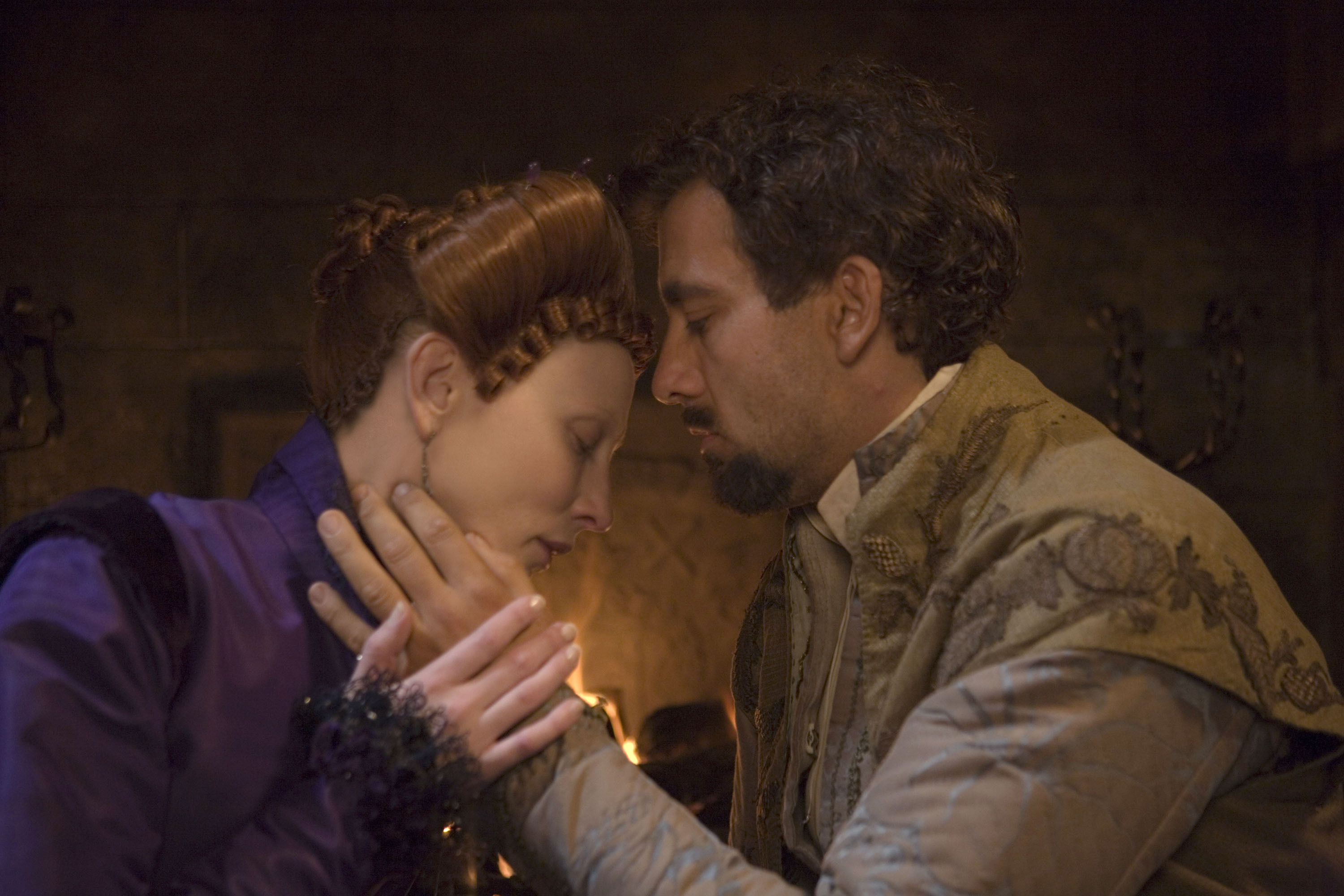One of the most highly anticipated films to have its world premiere at the 32nd annual Toronto International Film Festival this year was Indian-born director Shekhar Kapur's follow-up to his 1998 critically acclaimed film, Elizabeth. About a decade later, Shakur returns with Elizabeth: The Golden Age.
Actress Cate Blanchett reprises her role as Elizabeth I and is joined by Clive Owen in the role of the famed English explorer, poet, writer and courtier Sir Walter Raleigh.
As I sit at the inaugural press screening of this epic film last Sunday morning, I am wondering how or whether director Shekhar Kapur would tackle or dance around the issue of the Trans-Atlantic Slave Trade. I thought it unlikely that a film exploring the Golden Age of Queen Elizabeth I would not explore England's forays into the New World.

Sure enough, we find in the character played by Clive Owen, Sir Walter Raleigh, a dashing adventurer who charms Queen Elizabeth with his magnificent stories of reaching land after a long period of time basking in the sheer immensity of the ocean. There, he would found England's first colony, Virginia, in honour of the Virgin Queen.
As one of the journalists at the film's press conference at Sutton Place Hotel later that morning would say: "This is a very sexy film. Extremely sexy." It was indeed evident that director Shekhar Kapur was more concerned about bringing sexy back to the story of Queen Elizabeth I's Golden Age than actually being historically accurate. Speaking about his choice to cast the hunky Clive Owen in the role of Sir Walter Raleigh, Kapur says:
"Raleigh was free. Raleigh was uncontrollable. Raleigh was sexy. Raleigh was timeless. Raleigh was a pirate. Raleigh has certain aspects that I knew needed and actor that could represent all of them. He wasn't just macho. He wasn't just a man who came in to beat everybody up. He was a man who actually represented a man's masculinity. Essential masculinity. And that was Clive."
Early on in the press conference, I had a foreshadowing of the defence line maintained by the people behind the film regarding its historical inaccuracies. Oscar-winning actor, Geoffrey Rush, who plays the role of Sir Francis Walsingham in the film, was quick to point out that he doesn't "have any time for people who say this is historically inaccurate." He adds: "It's about metaphor and not documented evidence being presented [and] clinically laid out academically. We have libraries for that. But having said that, I think this film is very true to the broad issues of this particular phase of the historical Elizabeth's life."
But with any historical epics, the filmmakers should have the responsibility to respect some very basic tenets of historical accuracy. Elizabeth: The Golden Age fails miserably to do so; particularly with its deliberately misleading portrayal of Clive Owen's character, the historical figure of Sir Walter Raleigh (1552-1618).
In the film, Sir Walter Raleigh is depicted as a fearless explorer and pirate who terrorizes enemy Spanish ships at sea. He brings back the fruits of his looting to Queen Elizabeth I. There's an evident desire in the film to show him as being the courageous, unconventional and dauntless soul who offers Elizabeth a glimpse into a life she longs for but could never attain. In director Shekhar Kapur’s vision, Raleigh valiantly comes to the rescue of Queen and Country against the menacing Spanish Armada in a great naval battle that saved Queen Elizabeth I's rule in 1588.
While there was indeed a historical Sir Walter Raleigh who had gained the special favour of Queen Elizabeth I, and even her much-heralded love and affection, he was mostly known as a poet, explorer and lover of the arts rather than as a feared pirate and warrior. In fact, he did not even fight in the decisive battle against the Spanish Armada in 1588. The extent of Sir Raleigh's contributions to this pivotal British naval victory against the Spanish was providing England with an 800-ton ship, “The Royal Ark,” in exchange for an IOU of £5,000. That ship was chosen to lead the attack against the Spanish Armada.
But Sir Walter Raleigh was never on that ship. In fact, even Britain’s National Maritime Museum states it clearly:
Did Walter Ralegh fight against the Spanish Armada?
Walter Ralegh was interested in seamanship and navigation. With his new wealth, he built a warship, which he named the Ark Ralegh. He later gave this to the Queen, who changed the name to the Ark Royal. This ship later became the flagship of the English fleet, which fought against the Spanish Armada under the command of Lord Howard of Effingham. Although Walter Ralegh did not command a ship, he was a naval adviser to the Queen and helped Sir John Hawkins to implement improvements to the design of ships, an important factor in the success of the English fleet against the Spanish.
So who was that fearless pirate who inspired Elizabeth: The Golden Age’s director, Shekhar Kapur, and who was instrumental in the film defeating the Spanish Armada? His name was Sir Francis Drake, an infamous pirate and slave trader whom the Spanish called "El Draque" (the Dragon).
Sir Francis Drake, born (1542-1596), was a contemporary of Sir Walter Raleigh and also one of Queen Elizabeth I’s most notorious pirates. He was a cousin of the reputed slaver Sir John Hawkins. Together, they made the first English slave-trading expeditions under the blessing of Queen Elizabeth I. The British royal family had major connections with the trade of enslaved Africans from the time of Elizabeth I. The initials “DY” (Duke of York) were branded on hundreds of enslaved Africans bound for the Caribbean.
One of the major reasons for Sir Francis Drake’s hatred of the Spanish and his relentless desire for revenge stems from an episode in 1567. During one of his expeditions to New Spain (Mexico), the Spaniards captured a cargo of enslaved Africans on one of Her Majesty’s slaving ships. Hostilities immediately flared between Spain and England afterwards.
There is a climactic scene in Elizabeth: The Golden Age where Clive Owen’s character, supposedly Sir Walter Raleigh, has the brilliant idea of setting British ships on fire and unleashing them towards the anchored ships of the Armada in order to scatter the Spanish fleet. Historians credit Sir Francis Drake with that exploit. However, Shekhar Kapur unabashedly usurps that episode from Sir Francis Drake’s life and puts it in the hands of Sir Walter Raleigh in his film, while in actual fact, Sir Raleigh was safe on land – just in case history is of any significance here.
It’s no mystery why Shekhar Kapur would have chosen to make Sir Walter Raleigh more appealing by selecting only the “sexy” attributes of Sir Francis Drake’s life and persona and conveniently electing to bypass the whole slavery issue in his film. Or maybe he had Sir Francis Drake in mind at the outset and decided to sanitize him by labelling him in the film as a poet and romantic Renaissance man. Only she knows that.
The fact remains that despite repeated references to the British colonies in the New World and Trans-Atlantic voyages, not “once” does the film mention the barbaric Trans-Atlantic Slave Trade of enslaved Africans perpetrated by the British.
So I decided to raise the issue at the press conference for the film during the festival to see what Shakhar Kapur would have to say.
After giving a sarcastic “thumbs up” to my mention to him that this year marks the Bicentenary of the Abolition of the Slave Trade in the British Empire, he first tries to justify the lack of references to the Trans-Atlantic Slave Trade in his film with “budgetary concerns,” of all things.
He goes on to tell me that Sir Walter Raleigh was not so much a pirate as a “businessman pirate” who owned different kinds of ships. Kapur claims that he “didn't consciously put him (Clive Owen) in the role of Drake.” He adds that Sir Walter Raleigh, from his film, “was a true Renaissance man. He wasn't Drake. Drake was a man dedicated to the sea and power. And Raleigh was far greater than that.”
In his final argument, Shakar Kapur tells the press in the room that if we read about Walter Raleigh, we will realize that Sir Raleigh “was executed because the Spanish saw him as the greatest threat. Ultimately one of the reasons why a treaty was signed between Spain and England and one of the conditions was that Walter Raleigh would be executed. So you understand how much the Spanish hated him.”
Again, this is very misleading.
In the year 1616, long after Queen Elizabeth I had died in 1603, Sir Walter Raleigh was released from jail in the Tower of London (after having been put there in 1603 by King James under suspicions of treason) in order to lead an expedition to Venezuela in search of El Dorado. While there, his men sacked the Spanish outpost of San Thome on the Orinoco. “That’s” why the Spaniards demanded that Sir Walter Raleigh be executed. Not because of some revisionist and fictional act of bravery against the Armada in 1588.
Those who “don’t have time for historical accuracy” should not pretend to make historical epics.
I highly recommend Elizabeth: The Golden Age for those interested in Clive Owen’s pecs. Otherwise, please take it with a giant medieval block of salt.
Meres J. Weche is one of the founders of AfroToronto.com. He is also a Resource Person to the Committee for the Ontario Bicentenary Committee on the Abolition of the Slave Trade. He can be reached at
Click here to view the “Elizabeth: The Golden Age” press conference at the Toronto International Film Festival
Related article by the same author: The Dictatorship of Remembrance
"Elizabeth: The Golden Age" opens in theatres on October 12th, 2007:



